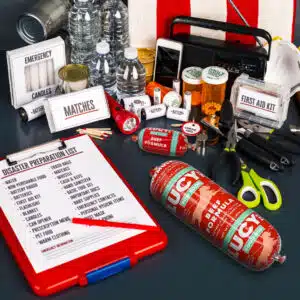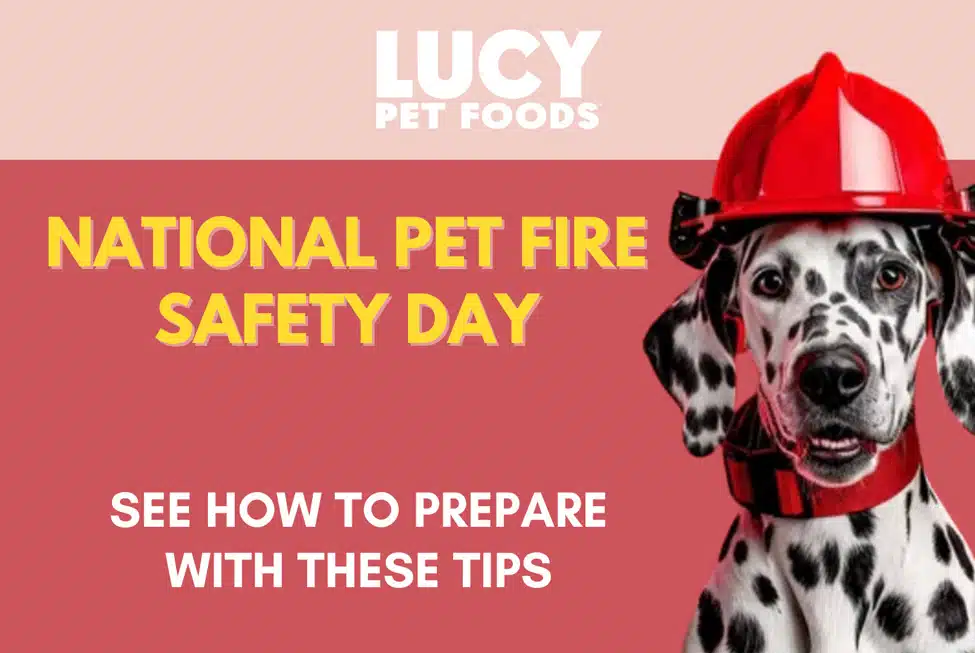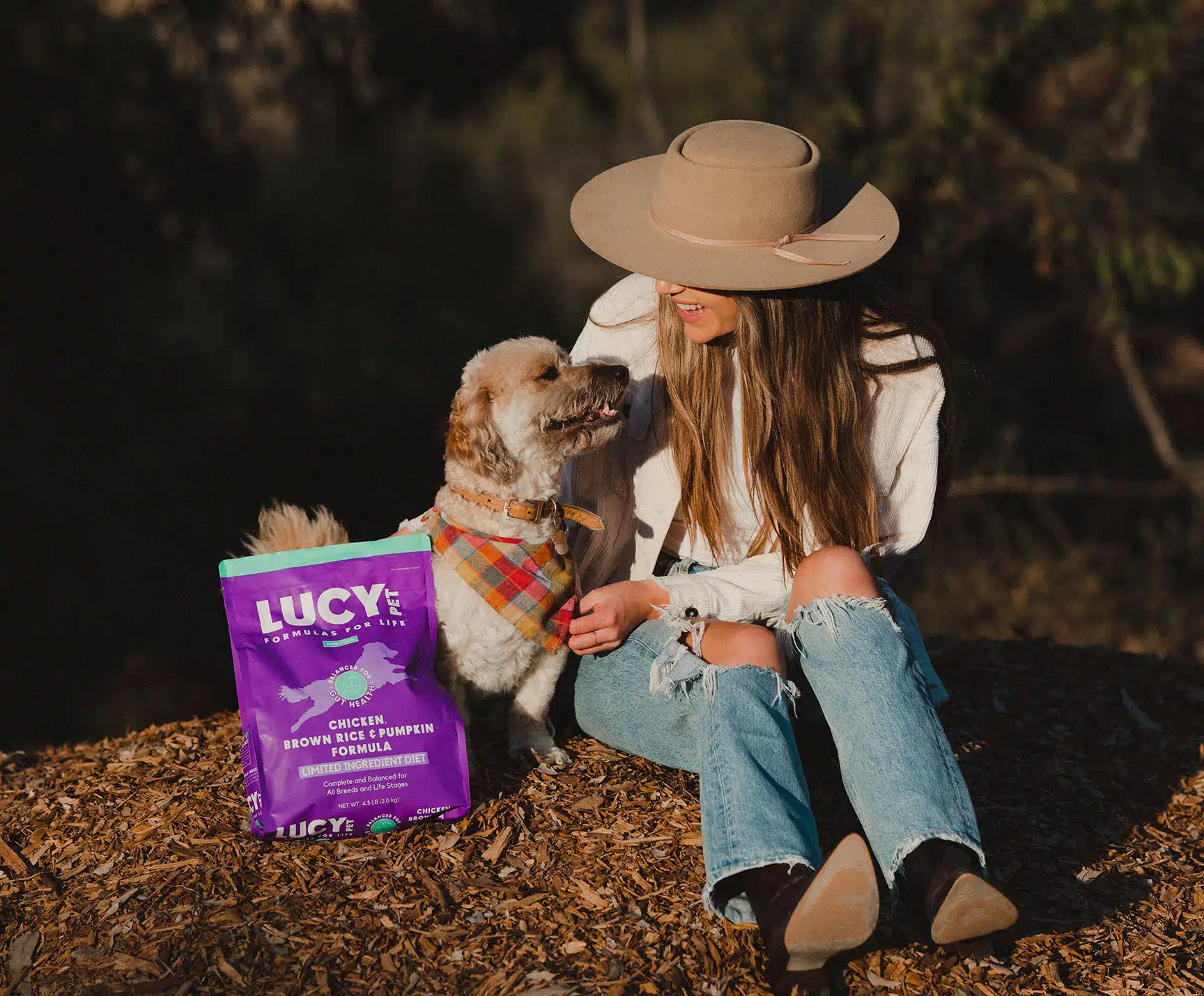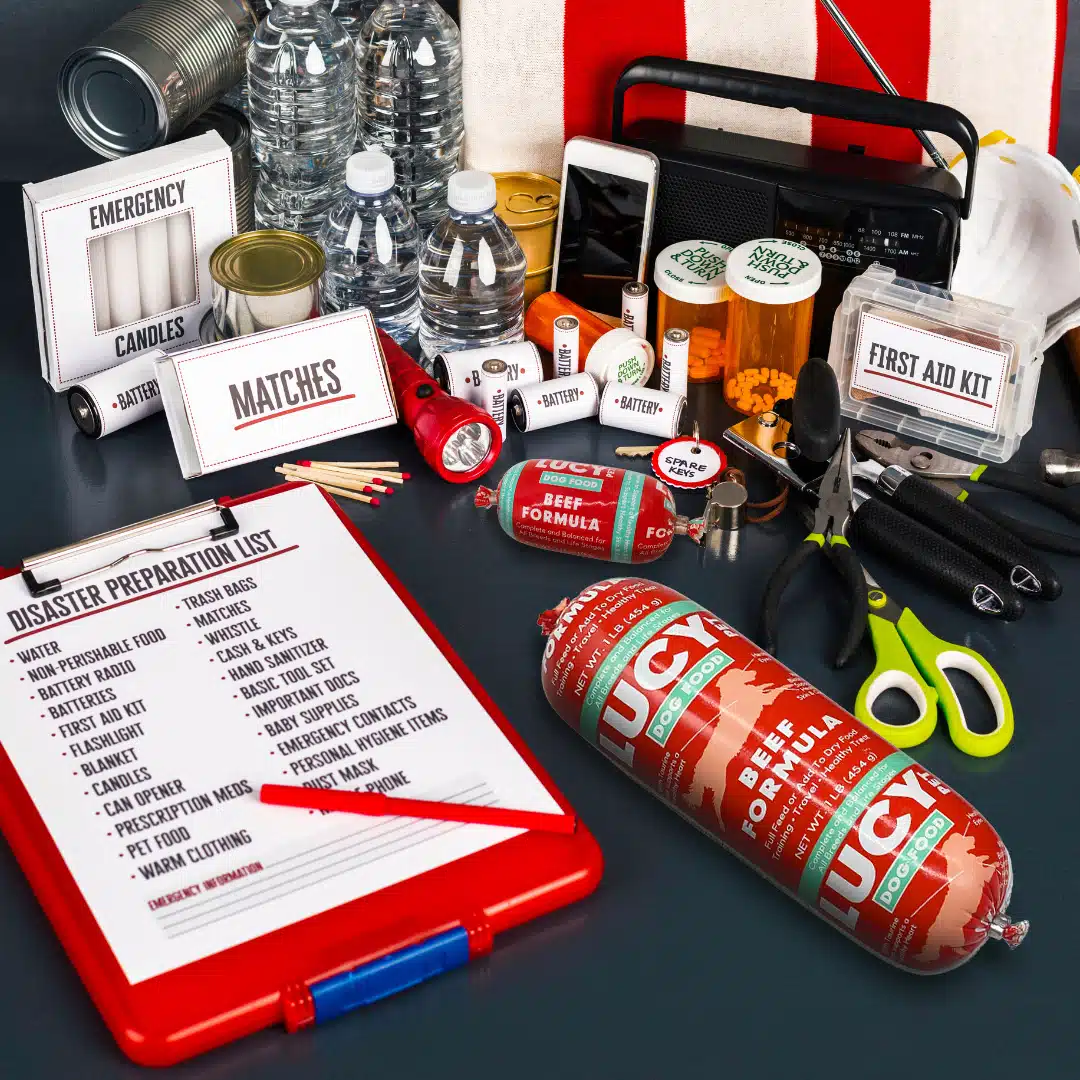 When disaster strikes, being stocked and ready to face an emergency is the best way to keep your family safe. Your pets can’t fend for themselves and are especially vulnerable if you’re forced to batten down the hatches because of bad weather. Here are ten items to include in a pet emergency kit so that your entire family can weather a natural disaster safely.
When disaster strikes, being stocked and ready to face an emergency is the best way to keep your family safe. Your pets can’t fend for themselves and are especially vulnerable if you’re forced to batten down the hatches because of bad weather. Here are ten items to include in a pet emergency kit so that your entire family can weather a natural disaster safely.
#1 Water
When bad weather strikes, obtaining fresh water becomes a top priority. When you go to the store to stock up on emergency supplies and reach for the bottled water, don’t forget to think of your pet. The more you can store for you and your family the better, but a week’s worth of water for each family member, including your pet, is a safe bet.
#2 Food
Store a one to two week supply of dry, rolls or canned food and place it in airtight containers. Food that can be stored and is easy to pack is very important. Did you know that Lucy Pet™ Dog Food Rolls are ideal as a nutritious full feed dog food that can be stored at room temperature for up to 12 months? And there is no need to refrigerate Lucy Pet Rolls until they are opened. Buy the smallest cans of canned food because once opened it needs to be stored in a refrigerator or ice chest. Record the normal feeding amount and times for each animal, including not what to feed in case of food allergies.
#3 Medications
Like people, some pets suffer from chronic conditions that require the constant administration of medicine to keep them healthy. Speak with your veterinarian ahead of time to secure an emergency supply of pet medicines you may not have access to if your community is hit with severe weather.
#4 Proof of Ownership
You’ll want to place photographs and/or any ownership papers of your pets in a sealed, airtight container as an essential component of your pet emergency kit. If your family has to evacuate to a shelter, you may have to board your pet. Keeping proof of ownership on hand will identify you as a pet owner.
#5 Proof of Recent Vaccinations
Keep all pets current on vaccines. Again, if your family has to evacuate and relocate to a shelter, note that due to capacity and safety issues, you may have to board your pet. Some animal clinics and boarding facilities will offer shelter to pets, but require your animal have up-to-date vaccinations. If you need to take your pet to an emergency animal shelter, taking a copy of their vaccination record with you will help ensure they get a spot.
#5 An Emergency Help List
Because everyone in the affected community will be in survival mode, you will want to have a list of helpful neighbors and/or emergency boarding facilities handy. Knowing where you’ll need to go to ensure your pet is safely cared for ahead of time will ensure your pet is safe for the duration of the emergency.
#6 Leashes and/or Pet Carriers
In the event of severe weather, your pet may panic and try to break loose to find a place to hide. Many pets become fatally trapped or injured because of this. In addition, the aftermath of a natural disaster usually results in downed power lines, fallen debris and contaminated groundwater. Therefore, it is best to utilize leashes and/or carriers to restrain your pet from running out into unsafe conditions.
# 7 ID Tags
Whether faced with an emergency situation or not, if you do become separated from your pets the best way to be reunited with them is to have additional ID tags you can fit them within a hurry. Consider installing a microchip in your pet to help locate them as well. Just don’t forget to keep your contact information up to date!
#8 First Aid Kit
Together with the telephone number of the nearest emergency animal clinic, you can put together an emergency medical kit for your pets should they become injured. Include items such as gauze to bandage an injury, hydrogen peroxide to disinfect a wound, and milk of magnesia to absorb poison should accidental ingestion occur.
#9 Creature Comforts
Your pet may be confined to a small space for an undetermined amount of time. Try to include a pet bed, extra litter, clean blankets and towels in your pet emergency kit. Like you, your pets will be nervous and frightened. Soothing them any way you can, will make your pets more likely to stay calm and relaxed until conditions improve.
#10 Honorable Mention: “Pets Inside” Sticker
Placing these stickers on all entrance doors to your home will ensure that emergency responders and passerby will be vigilant just in case you were unable to evacuate your pet during an emergency.
By Doc Halligan






Leave A Comment
You must be logged in to post a comment.